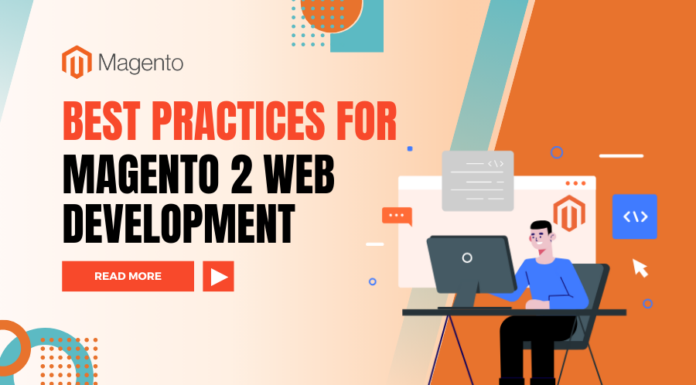
The technical aspect is one of the most important factors that you should consider before operating an online business. It’s indisputable that the success of any eCommerce store depends significantly on its platform. In order to process orders and provide customers with an excellent shopping experience, you will need an appropriate back-end which suits your business.
Magento Vs. Woo Commerce are currently the most popular eCommerce platforms on the market in 2023. In this article, we will look at the differences between Magento Vs. Woo Commerce to help you find the right platform for your business.
Table of Contents
1. What is Magento?
Magento is an open-source eCommerce platform for creating online stores, accepting payments, and managing goods. It has a community version that can be downloaded for free. It also offers to pay options that include extra features, cloud hosting, and support.
2. What is Woo Commerce?
Woo Commerce is an open-source eCommerce platform based on Word Press (the most popular website builder in the world). It makes it simple to set up an online store, accept payments, manage inventory, and much more. It’s built on top of Word Press (read our full Word Press review), which allows you access to hundreds of plunging and themes to help you expand your eCommerce company.
Both platforms are open-source software that can be customized with extensions and make use of design templates. They do, however, have distinct advantages and disadvantages that distinguish them. If you are just getting started, there are a few things to consider when selecting a platform. These fundamental considerations are critical when determining which eCommerce solution is best for your company.
- Budget: The initial cost of opening your shop, as well as ongoing expenditures that will affect your company.
- Ease of Use: How easy is it to use for newcomers?
- Payment Methods: Multiple payment gateways should be supported. If you want certain payment systems, make certain that it supports them.
- Scalability: Your eCommerce platform should be able to scale to meet the demands of your expanding industry.
These are only a few of the fundamental considerations. Depending on your industry, you may also want to consider how the platform handles inventory, fees, invoices, and other functions. In this Magento vs. Woo Commerce comparison, we’ll look at how the two platforms stack up against each other in terms of these fundamental specifications.
3. Magento Vs. Woo Commerce: Cost

For most entrepreneurs, the cost is one of the most important factors to consider when making decisions. When you’re first starting with your eCommerce website, you’ll want to consider the expenses, as well as how they’ll expand as you add more resources, add-ons, and other services. In terms of cost, Magento Vs. Woo Commerce, which one is suitable for your business?
Cost of Magento eCommerce Platform
Magento is open-source software that is self-hosted. It is available in two versions. You have a community edition, to begin with. You can get this from any hosting company and install it yourself. It doesn’t have all of the characteristics, and it doesn’t come with any kind of support. Second, there’s Magento Commerce, which offers paid plans that include cloud hosting. These plans’ prices aren’t listed on the Magento website.
Magento Commerce, a small business plan, is available as a monthly subscription with a revenue-based licensing fee. Magento’s paid plans are very pricey. With high-performance cloud hosting, extra features, and professional support, they provide more value. Several features that would otherwise require a paid extension are included in these plans. Even the Magento community edition, itself, is not inexpensive.
The core software is free to download but to run it, you’ll need a VPS hosting plan or a cloud host likes Amazon Web Services. This means that even though you use the free version, your hosting bill would be much higher than if you used a shared hosting plan. If you buy paid extensions, themes, or recruit a developer, you’ll save money
Cost of Woo Commerce
Woo Commerce is a free piece of software that can be downloaded and installed by anybody. It is built on top of Word Press, so it can be installed on any Word Press website. Although Woo Commerce is free, you will need to register a domain name, an SSL certificate, and a Word Press hosting account to get your Woo Commerce shop up and running.
This is less expensive than the self-hosted Magento community edition, but it is also a significant investment for a startup. Several specialized Woo Commerce hosting companies are now offering discounted hosting plans, dramatically lowering your initial cost. Blue Host, a Woo Commerce and Word Press hosting provider that is formally endorsed by Beginner, has agreed to provide beginner customers with a free domain name, SSL certificate, and hosting discount.
Besides free SSL, there are many paid options from authorized SSL providers that can offer you a good discount on your SSL purchase. It may be regular SSL, multi domain wildcard or any other type of SSL certificate, you will find the best deal for your SSL certificate. A paid SSL also comes with many exciting features that will make your purchase worthy.
Launching a Woo Commerce store is much less expensive than starting a Magento community edition store. Woo Commerce hosting plans have a lot more options than Magento hosting plans. Aside from hosting, using paid Woo Commerce extensions and themes would increase your costs. Woo Commerce; on the other hand, provides access to over 55,000 Word Press extensions and hundreds of free Word Press themes.
As an alternative to paying extensions, you can easily discover free Woo Commerce plugin. You can also save money by using one of the many free Woo Commerce themes available. Therefore, you might prefer Woo Commerce if you are running a small business.
4. Magento Vs. Woo Commerce: Ease of Use

The majority of people who start an eCommerce company are not programmers or web developers. They want a platform that they can use without having to pay someone a fortune to help them with simple tasks. Even seasoned users prefer an easy-to-use platform that allows them to focus on their business rather than on software.
Magento – Ease of Use
Magento is a robust eCommerce platform with a slew of pre-built features that work right out of the box. It comes with a cumbersome configuration process that new users may find difficult. Magento is difficult to install, and most hosting companies do not provide pre-configured Magento installers. The installer language is very developer-centric, so beginners may be a little confused about a few things. Following the setup, you’ll need to spend some time learning the fundamentals. Installing extensions and customizing themes isn’t always straightforward, and you may need to seek assistance.
Woo Commerce – Ease of Use
When compared to Magento, Woo Commerce is a bit easier to use. Many Woo Commerce hosting providers will automatically install it alongside Word Press, making installation easier. You must first install Word Press because Woo Commerce is a Word Press plugin. Even if your host doesn’t automatically install Word Press, there’s a good chance you’ll be able to do so with a few clicks using an auto-installer.
5. Magento Vs. Woo Commerce: Payment Methods
You will be making online payments on your website as an eCommerce shop. Then Magento Vs. Woo Commerce, you need to know which platform is suitable for your payment methods. You can accept payments on your website through a variety of payment gateway firms. Some payment gateways aren’t accessible in every country. You must have choices available to both you and your users.
Magento Payment Methods
By default; Magento supports PayPal, Authorize.net, and cash on delivery, bank transfer, and purchase order payments. Many popular payment gateways, such as Stripe, 2Checkout, Braintree, We Pay, Google Checkout, Skirl, and others, have extensions available. Magento’s APIs make it simple for developers to incorporate payment gateways. If the payment gateway you want isn’t available yet, you might recruit someone to make a custom extension for you.
Woo Commerce Payment Methods
By default, Woo Commerce accepts PayPal and Stripe payments. It also includes extensions and add-ons that support all global payment gateways. Woo Commerce also accepts a variety of regional and lesser-known payment methods. Any payment firm would build an add-on for Woo Commerce and provide support for it because it is so easy to expand.
6. Magento Vs. Woo Commerce: Extensions and Integrations

The number of features your eCommerce platform can add to the core software is limited. This opens the door for third-party extensions, tools, and integrations to enhance the platform’s capabilities. Third-party integration providers provide extensions, themes, and support for both Magento and Woo Commerce.
Magento Extensions
Magento has a thriving developer, agency, and freelancer community. You can use a variety of third-party extensions for Magento that is both free and paid. These extensions make it simple to add new features to your online store and incorporate other tools and services. Magento Marketplace had 3751 extensions available at the time of publication, with 1182 of them being free. Given that Magento has a lot of features built-in, that’s a good number of extensions.
Woo Commerce Extensions and Add-ons:
Because Woo Commerce is built on top of Word Press, you have access to over 55,000 free and hundreds of paid Word Press plugin. Whether you want to add contact forms, Google Analytics, lead generation forms, or any other feature you can think of, chances are there is already a plugin for it. You can connect your Woo Commerce store to any third-party service, such as your email marketing firm, CRM software, payment gateways, and more, thanks to the enormous number of extensions available.
7. Magento Vs. Woo Commerce: Scaling Your Business

Growing your eCommerce company presents its own set of difficulties. To keep up with your company goals and development trajectory, you will need more server resources as your website traffic and sales increase same as the Abba patio coupon code. Magento Vs. Woo Commerce, both are capable of handling large eCommerce stores with high traffic spikes. They are, nonetheless, two distinct platforms, with varying scalability and infrastructure requirements.
Scaling Magento
Magento is a sturdy eCommerce platform that was built from the ground up. When it comes to scaling, though, your costs and technical difficulties can soar. If you’re using Magento’s community release, you’ll have to do it on your own. Magento is resource-intensive software, so if you’re using a VPS, you’ll need to upgrade to a dedicated server before moving to a cloud hosting service like Amazon Web Services.
Conclusion
It is difficult to decide Magento Vs. Woo Commerce, which one is better because each platform has its own benefits, and none of which will be completely perfect for your requirements. You should consider a number of factors, including security, product management, overall budget and performance, and your own specific requirements.
Related topics
Magento vs Shopify: Which platform is better for e-commerce stores?
Laravel VS Magento: Best Framework for E-Commerce Websites?
Magento vs WordPress: Meet the Differences and Know Which is Best for Your Business













![[SALE OFF] Discount 30% Off All Products On Christmas And New Year 2024 Christmas & New Year 2024 sale off from Landofcoder](https://landofcoder.b-cdn.net/wp-content/uploads/2023/12/xmas-banner-900-x-500-px-3-218x150.png)




